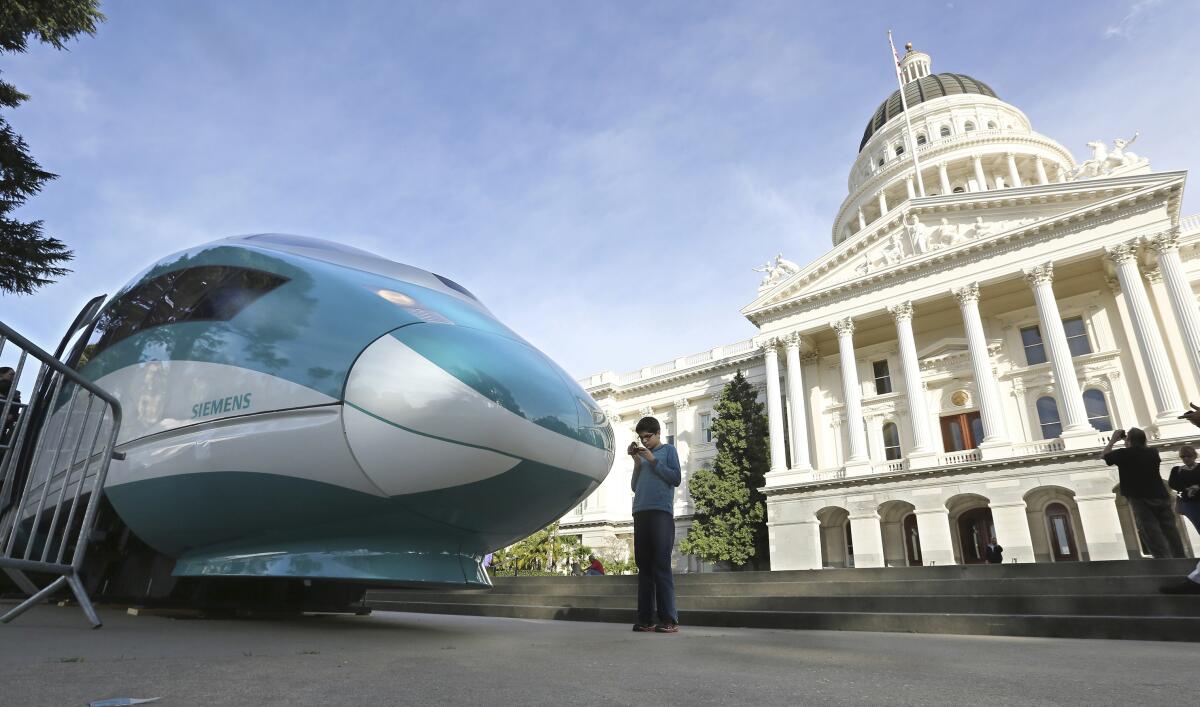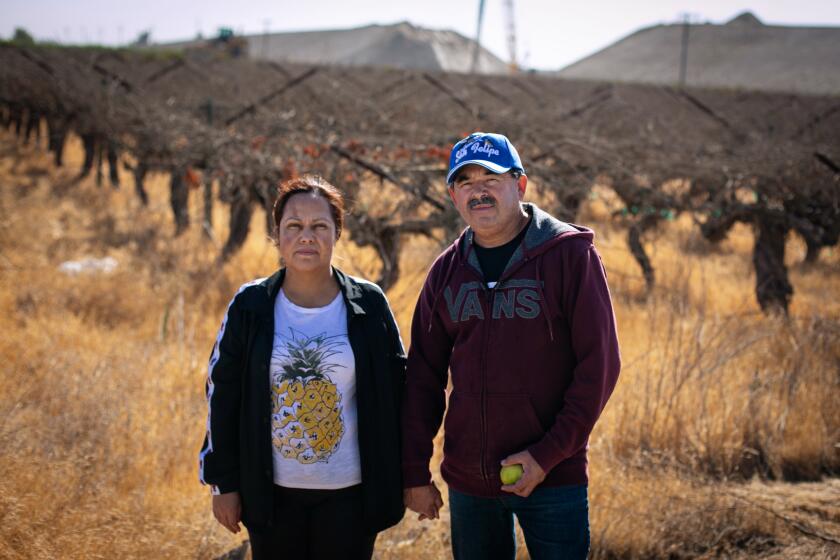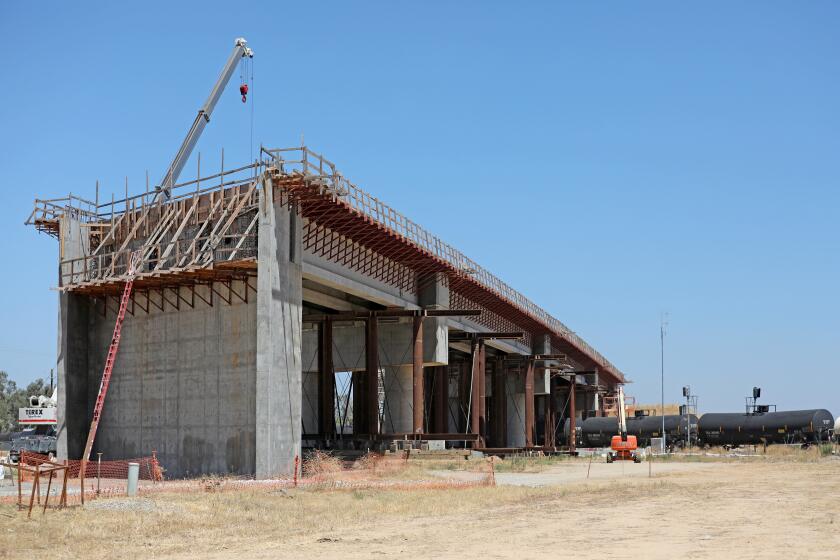Costs of California’s troubled bullet train rise again, by an estimated $5 billion

California bullet train officials on Tuesday released a new draft project blueprint that acknowledges that costs have risen roughly $5 billion but seeks to address several issues that have generated blowback.
The 2022 business plan estimates that the full, 500-mile high-speed system between Los Angeles and San Francisco will cost as much as $105 billion, up from $100 billion two years ago. In 2008, when voters approved a bond to help build the railroad, the authority estimated that the system would cost $33 billion.
In its latest blueprint, the California High Speed Rail Authority abandoned a plan to save money by building only a single track for an initial 171-mile operating system between Bakersfield and Merced; instead, it plans to build a two-track system.
When it added the one-track system to its 2020 business plan, the authority asserted that additional capacity would not be needed. But the proposal came under fire; some experts said it would eventually cost more than building two tracks at the same time.
Some of the higher costs undoubtedly stem from changes the authority was forced to make to avoid impacts on San Joaquin Valley communities.
The California High-Speed Rail Project pledged to minimize impacts on low-income people, but many say the project has run roughshod through their communities.
Another point of contention has been the uncertain location of the bullet train station in Merced, leaving the potential for it to be a considerable distance from a rail hub serving the ACE and San Joaquin lines, conventional systems that link to the Bay Area and Sacramento. The authority said it is working with other agencies to develop a single station, which would allow somewhat normal passenger transfers.
These issues were two among many that led leaders in the Assembly last summer to hold up granting a $4.2-billion appropriation necessary for the 171-mile starter system. As a result, the rail authority had to adopt budget cuts that would slow down planned construction and delay the acquisition of trains.
Cost increases on the project have been sharper in past years, but the new $105-billion estimate may not take full account of changed assumptions and conditions in certain segments of the route or other construction cost drivers, according to engineers who work on the project. Other variables include when funding would become available for additional future construction, the time horizon for the entire project, preliminary designs that are subject to significant modifications and changes in the cost of acquiring land.
Amtrak is likely to be the biggest rail winner, getting the lion’s share of $66 billion to upgrade the northeast corridor from Boston to Washington.
The recently enacted $1.2-trillion infrastructure bill in Washington offers hope for some additional funding, though nothing has been granted yet. The rail authority clearly has high expectations, saying, “New federal funding will also enable the Authority to invest dollars statewide to advance the program, make capital investments to improve mobility and advance the connectivity of high-speed rail with existing passenger rail providers.”
According to the rail authority, costs are not expected to change significantly for the 171-mile initial operating segment it wants to build between Bakersfield and Merced. The $22-billion baseline price tag is basically the same as it was two years ago, despite growing costs for change orders, delay claims, land and other factors in Fresno, Kings and Tulare counties.
The plan to add a second track to the 171-mile starter system would add $1 billion to the $22-billion baseline, which changed little from two years ago, according to technical documents that accompanied the main business plan.
More to Read
Sign up for Essential California
The most important California stories and recommendations in your inbox every morning.
You may occasionally receive promotional content from the Los Angeles Times.












